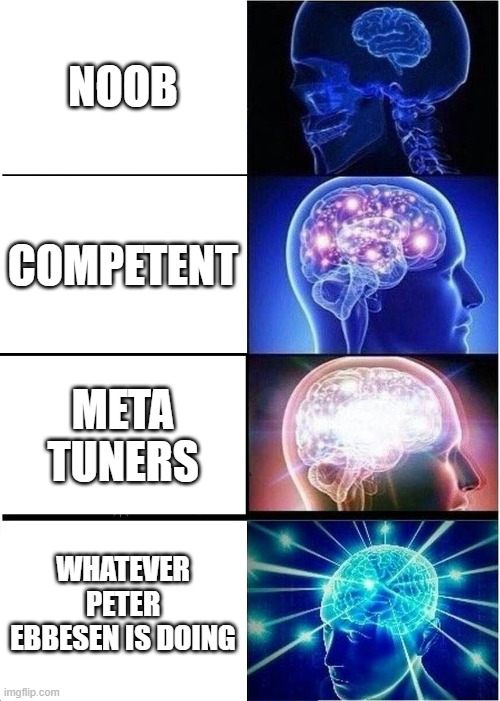Hi everyone,
The 3.10.3 "Pyxis" update has been released. This release focused primarily on stability, and the contents are identical to the Open Beta that was released on Tuesday.
We currently have plans for another update this cycle with some more fixes, including an AI fix to encourage them to recruit an appropriate number of scientists, and a change to the Micromanager negative trait. As with the last few, we plan on putting it on the stellaris_test branch on Tuesday, for release later on in the week.
Stellaris has undergone a significant amount of power creep over the years, and the speed at which we're able to burn through the entire technology tree is much higher than is healthy for the game. Due to the large number of stacking research speed modifiers, repeatable technologies are reached far too early in the game. Another power creep issue mentioned by many players, it's also become trivial to stack large numbers of ship build cost and ship upkeep reduction modifiers.
The Holiday Open Beta will be a feature branch that contains the following changes, which may or may not go into 3.11 (or 3.12, or any release at all for that matter). Similar to how we handled Industrial Districts several years ago, we're intentionally keeping these separated from core 3.11 development, isolating this in a parallel track.
We’ll have a feedback form set up to collect your thoughts, and the Open Beta will run until the middle of January.
We'll have more information in next week's dev diary.
We’ve currently scheduled the Mod Jam mod to release on January 11th! If you’re interested in participating, you can get more details and sign up here. You can also subscribe to the Mod Jam mod here, and get it as soon as it releases.

See you next week!
The 3.10.3 "Pyxis" update has been released. This release focused primarily on stability, and the contents are identical to the Open Beta that was released on Tuesday.
Improvements
- Now ‘New Entries’ notification on the outliner tabs is cleared, even when switching between tabs using keyboard shortcuts.
- Ulastar is now an advisor
- Vas the Gilded is now an ambassador
- Pre-FTLs in Federation's End now have their technological progress frozen
- Fixed a number of event or paragon leaders not being generated with the correct traits
- Fixed envoys passively gaining XP
- Fixed missing subtitle for Scout trait
- Pre-FTL Empires will now have a fully functional council when they ascend to the stars.
- Released Vassals will now have a fully functional council when released.
- Fix crash on startup for Linux (including steam deck).
- Fix crash related to modifiers of recently destroyed empires updating
- Fixed crash when surveying a planet that was just removed from the map
- Removed some empty space in the topbar
- Added moddable_conditions_custom_tooltip parameter to civics modification statement to allow displaying a custom requirement key when no condition has been specified
- Fixed civics modifications statements not always (not) allowing the correct civic changes
- Improved error logging to know which federation perk is invalid
We currently have plans for another update this cycle with some more fixes, including an AI fix to encourage them to recruit an appropriate number of scientists, and a change to the Micromanager negative trait. As with the last few, we plan on putting it on the stellaris_test branch on Tuesday, for release later on in the week.
What’s After 3.10.4?
Tentatively scheduled for next Friday, we plan on putting up a longer open beta over the holidays that seeks to collect feedback regarding some potential balance changes to ship production, upkeep, and research in general.Stellaris has undergone a significant amount of power creep over the years, and the speed at which we're able to burn through the entire technology tree is much higher than is healthy for the game. Due to the large number of stacking research speed modifiers, repeatable technologies are reached far too early in the game. Another power creep issue mentioned by many players, it's also become trivial to stack large numbers of ship build cost and ship upkeep reduction modifiers.
The Holiday Open Beta will be a feature branch that contains the following changes, which may or may not go into 3.11 (or 3.12, or any release at all for that matter). Similar to how we handled Industrial Districts several years ago, we're intentionally keeping these separated from core 3.11 development, isolating this in a parallel track.
We’ll have a feedback form set up to collect your thoughts, and the Open Beta will run until the middle of January.
- Research Speed Bonuses now usually come with increased Researcher Upkeep.
- By changing these to throughput bonuses (cost + production), a technology focused empire will require more Consumer Goods or other resources depending on who they use to research. This puts a partial economic break on runaway technology.
- Reduction in most Research Speed bonus modifiers.
- The +20% Research Field technologies have been removed. In their place we have introduced new "Breakthrough Technologies". These technologies are required to reach the next tier of research.
- Whether it be the transistor, the theory of relativity, or faster-than-light travel, occasionally there are technologies that redefine a field of science.
- The intent of these breakthrough technologies is to slow down the front-runners a little bit, while still letting the slower empires get pulled along.
- Breakthrough technologies start off more difficult than regular technologies but have a variant of tech spread - the more nations you have at least low Technological intel on who have already discovered them, the cheaper they are to research (even down to instant research once the theory is commonplace). This tech spread varies based on galaxy size.
- Enigmatic Engineering prevents this tech spread.
- Breakthrough technologies have animated borders to stand out.
- Whether it be the transistor, the theory of relativity, or faster-than-light travel, occasionally there are technologies that redefine a field of science.
- Reduced Output of Researcher Jobs:
- Researchers and their gestalt equivalents now produce 3 of each research instead of 4
- Head Researchers now produce 4 of each research instead of 6
- The effectiveness of Ministry of Science has been halved
- Astral Researchers now produce 5 physics and 1 of each other research instead of 5 physics and 2 of the other researches.
- All other researchers, such as Necromancers, have been left alone for now
- The Technology curve has been changed from 1000 × 2^n to 500 × (2^n + 3^n), making the difference between an early and late-game tech more distinct.
- Replaced or removed most sources of Ship Cost and Upkeep reductions from the game.
- Military Buildup Agenda now improves ship build speed and reduces claim costs. (It still reduces War Exhaustion on completion.)
- Naval Procurement Officer councilor now improves ship build speed.
- Crusader Spirit civic now improves ship build speed.
- Psionic Supremacy (Eater of Worlds) finisher no longer reduces ship build costs.
- Vyctor's Improved Fleet Logistics trait now reduces ship build costs by 10% instead of 20%.
- Progress Oriented modifier no longer reduces ship build costs.
- Match tradition in the Enmity tree bonus to ship build costs reduced to 5% instead of 10%.
- Master Shipwrights tradition in the Supremacy tree no longer reduces ship build costs.
- Chosen of the Eater of Worlds ship build cost reduction reduced to 5% from 15%, and no longer modifies ship upkeep.
- Military Pioneer trait now reduces starbase upgrade costs instead of ship build costs.
- Shipwright trait no longer reduces ship build costs.
- Reduced penalty the Irenic trait applies to ship build costs.
- Sanctum of the Eater ship upkeep reduction reduced from 10% to 5%.
- Mark of the Instrument ship component no longer reduces ship upkeep.
- Grand Fleet ambition now increases power projection instead of reducing ship upkeep.
- Fleet Supremacy edict no longer reduces ship upkeep.
Corporate Crusader SpiritLetters of Marque now reduces ship upkeep by 5% instead of 10%.- Bulwark ship upkeep reductions reduced by 50%.
- Logistic Understanding, Armada Logistician, and Gunboat Diplomat traits now reduces ship upkeep while docked
We'll have more information in next week's dev diary.
#MODJAM2024 Signups are open!
Over the holiday period, we will be running another Mod Jam. This year’s theme will be revealed on December 12th, and sign ups will close on December 14th. The Community team will be posting weekly Mod Jam updates in place of our weekly Dev Diaries, so you can still get your weekly Stellaris fix.We’ve currently scheduled the Mod Jam mod to release on January 11th! If you’re interested in participating, you can get more details and sign up here. You can also subscribe to the Mod Jam mod here, and get it as soon as it releases.

See you next week!



